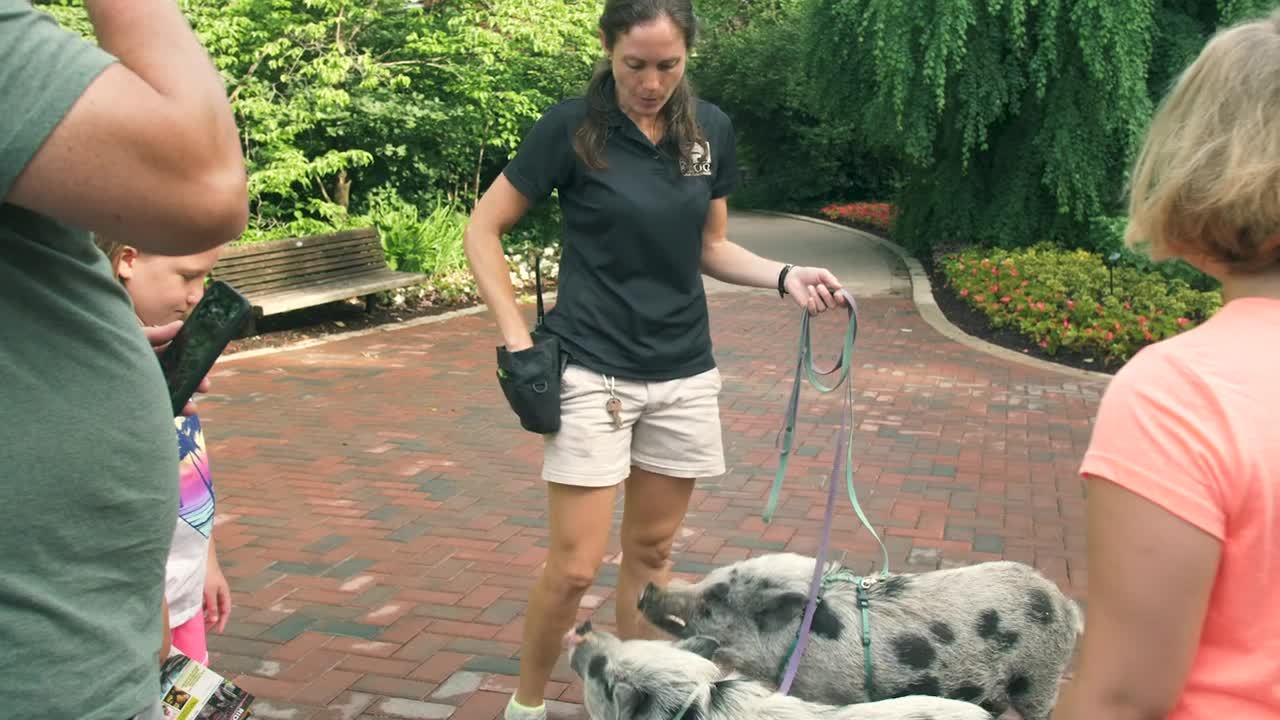What happens when a zoo decides it wants to be more than a zoo? Driven by a desire to never settle for the status quo, the Cincinnati Zoo asked that question, and they continue to answer it, every day. What would a zoo be like if 600+ employees were fully invested? Could a zoo help save endangered species? Since 2009, Paycor has helped the Cincinnati Zoo ask and answer the kinds of questions that make a difference. See the results for yourself.

Video Transcription
Mark Fisher: If I could summarize 12 years ago, one phrase that kinda summed up our zoos culture and mentality, it would be the status quo – the love of the status quo, because the status quo is very comfortable and safe. That’s why we were struggling so much. Today the culture is 180 degrees the other way.
Thane Maynard: Change came quickly at the Cincinnati zoo about a dozen years ago. We had been running in the red for a number of years, and of course the board was very clear that had to stop. So that focused us a lot, and we really did say we need to do a strategic plan that says, what’s the way forward so we can grow?
Mark Fisher: From employee moral to the progressive mindset of pushing the envelope, that culture of being allowed to make mistakes as long as we are being smart about it and pushing things forward and doing things that have never been done before, that’s the culture here at the zoo. And that’s why we have done so many things here that other zoos, other organizations, profit or nonprofit alike look at us and they’re like: How did you guys pull that off?
Jeff Walton: Employee experience is everything here, we have been fortunate enough now to win the top work places to work for 6 years in a row, but it’s not necessarily about winning the award it’s about the feedback we get from our team. It was a commitment from Thane and Dave, our Director and COO, when they came on to their roles here at the zoo that we needed to change how we did business here at the zoo but we also needed to focus on our people cause we are not going to accomplish anything without focusing on our people. We will hire anywhere from three to four hundred seasonal employees each year. We are a staff of two and a half. When we started with Paycor we were a staff of two. HR can often times be buried in a pile of paper. So onboarding helped us in two ways; one it helped get all those documents online, and two it actually allows us to get all those documents completed before the employee actually starts on their first day. So it allowed us to be much more efficient in our use of time, and actually increase our service level for the employees coming in and for our managers as they are trying to bring people onto the team.
Rhiannon Hoeweler: For every job, we are getting a lot of applicants, a lot of people want to work at the zoo. Paycor has really helped us to really take away all of that double checking and it just does it for you which is so beautiful and it makes the process so much easier for us, and it saves us a lot of time and me a lot of anxiety. So that’s a really big benefit to what its brought to our table.
Jeff Walton: Life before Paycor was process oriented with a lot of complaining. When we added the applicant tracking program that was a game changer for us. That has been one of the programs that managers have just been really kinda glowing about, giving them that control and that kind of power over their process they feel like they are not waiting for someone else to move on it, the power is in their hands.
Dr. Terri Roth: There is very few opportunities to do this, work in a facility like this, work with wildlife conservation and apply the science that I love to help save endangered animals. So, I think most of the staff that work here feel very very fortunate to be a part of this program.
Jeff Walton: Here at the Cincinnati zoo we have a lot of fun. Our working motto is we’re here to inspire every visitor with wildlife everyday.
Thane Maynard: We work hard to get everybody from kids working in the parking lot part time to keepers taking care of baby Fiona to really embrace that. We don’t want to be a passive zoo where you walk through and say: oh there’s a sleeping rhino, there’s a sleeping cheetah. We wanna be a zoo where when you leave your kids say: man lets go there again that was a lot of fun.









